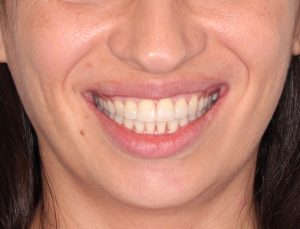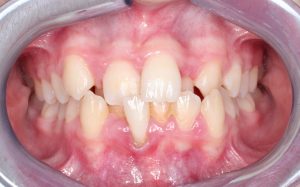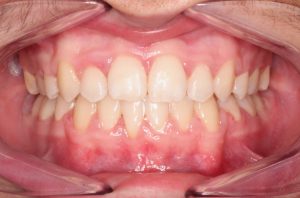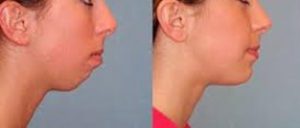ORTHODONTICS IN ADULTS
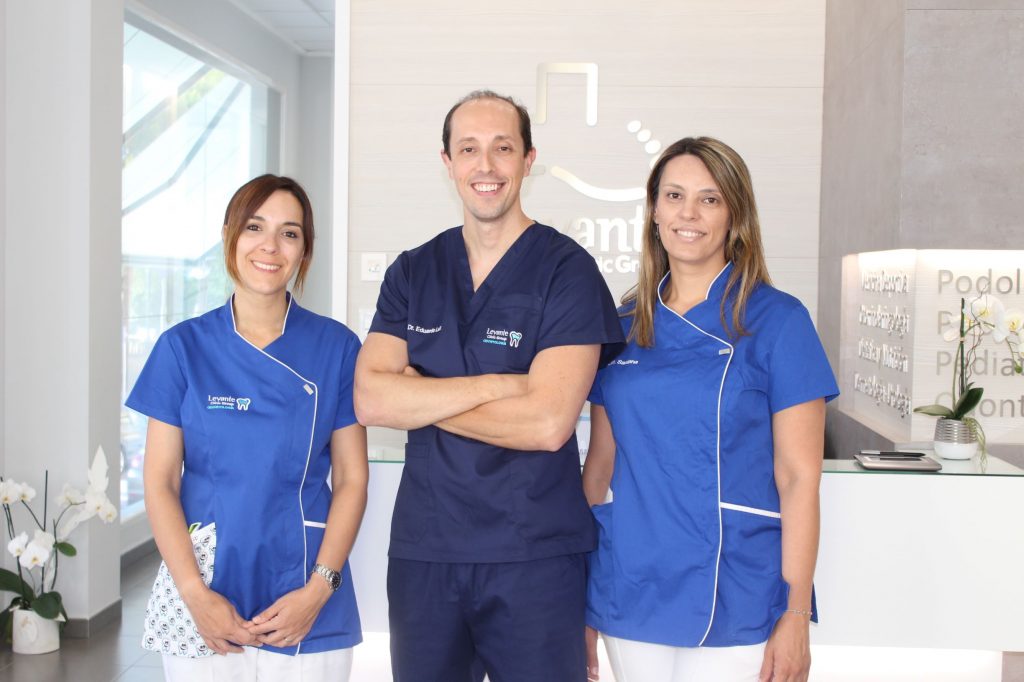
Orthodontics is a dental specialty whose objective is to recover the correct position of the teeth to improve oral health and the smile of patients.
Orthodontists will prevent, diagnose and treat misaligned teeth and bite disorders with the help of orthodontic appliances, which realign the teeth, correct the bite (occlusion) and close spaces between the teeth.
Crowded or misaligned teeth are more difficult to clean and are at risk of being lost, due to tooth wear or periodontal disease.

Orthodontics has evolved and continues to evolve a lot both in the scientific and technical part. This evolution has allowed orthodontic treatment in adults, a fact that until a few years ago was quite questioned, but with the advancement of research and the evolution of materials, this statement is no longer correct.
Today, the number of adult patients who undergo Orthodontic Treatment is increasing.
We can say that age is NOT a CONTRAINDICATION factor of orthodontic treatment, being perfectly possible to perform it at ANY age, as long as some limitations are respected such as: the absence of craniofacial growth, and bone support.
Why are there more demands for orthodontic treatments currently?
• Higher life expectancy pf the world population;
• The search for better health conditions and;
• The aesthetics.
Consequences of the evolution of orthodontic treatment
The treatments can be carried out with a wide variety of devices, whether FIXED or REMOVABLE, AESTHETIC or NOT, but the important thing is to agree with the indication of the case in question.
THE FIXED APPLIANCES
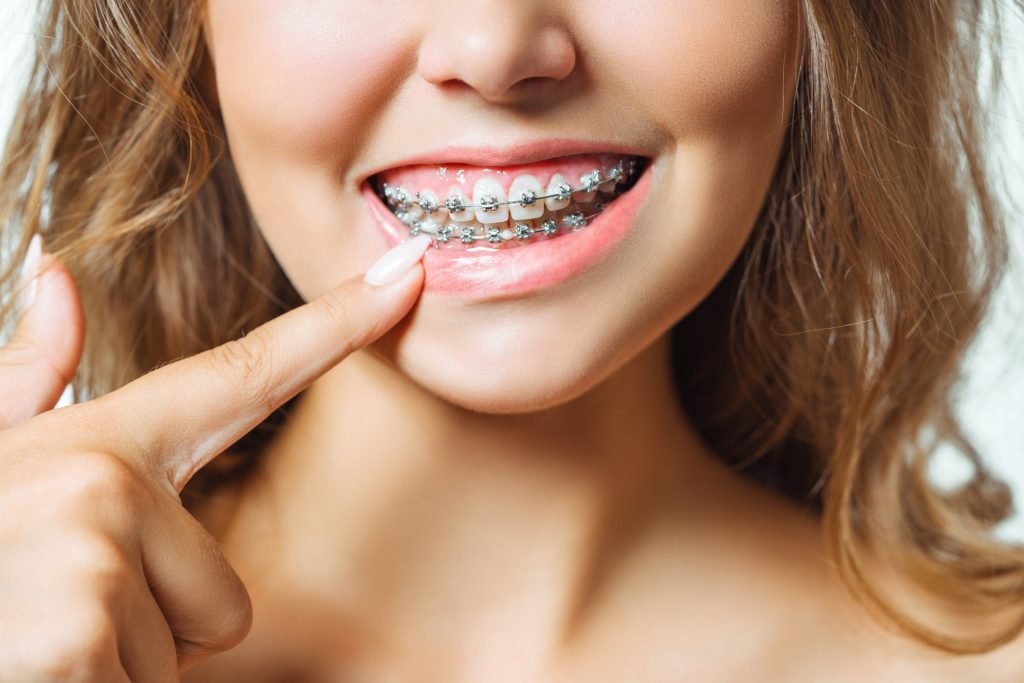
The most used is that of metal brackets, although there are aesthetic brackets (ceramics).

As for the removable ones, we have a large number of aligners (“invisible” appliances) similar to whitening plates.
This system brought a great advantage to adults who did not agree to undergo orthodontic treatment due to the aesthetic factor, discomfort and difficulty in cleaning the fixed appliances.
ORTHODONTICS IN CHILDREN
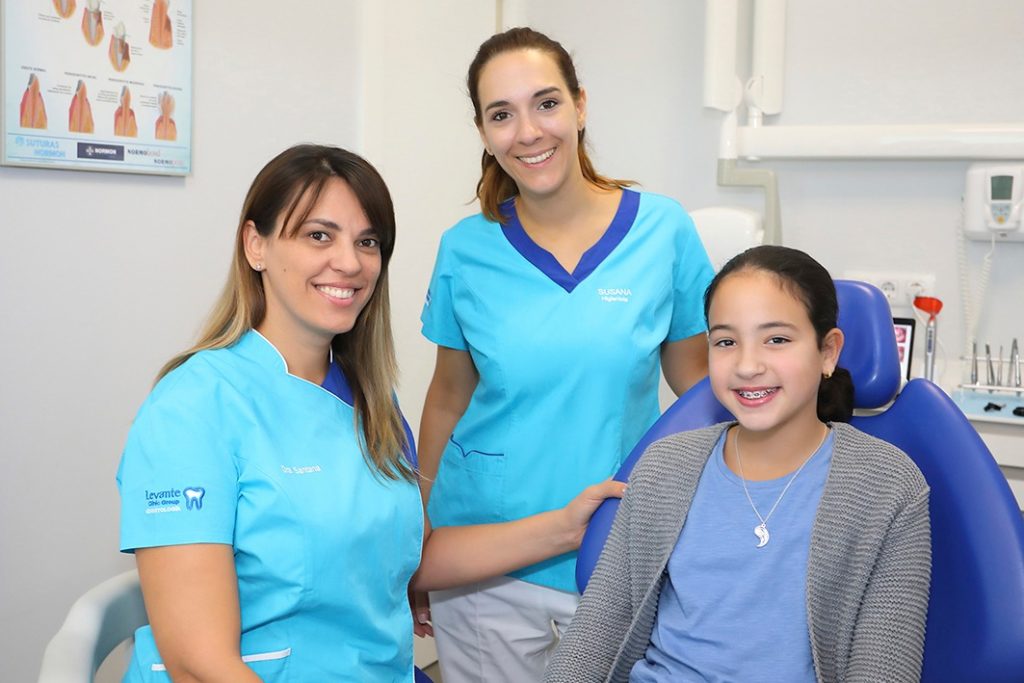
Dentofacial orthopedics is a specialty of dentistry that deals with the treatment of all malocclusions that are produced by an alteration in the growth of the dental arches and the maxillary bones.
It consists of the use of bone movements thanks to the application of forces with extraoral and functional appliances.
What is CLASS III?
• It is a malocclusion that must be treated early, that is, when the child has a prominent jaw or a deficient upper jaw.
• It is a hereditary malocclusion on many occasions and aesthetically compromised.
• It is complex to treat and we cannot always avoid surgery to correct the position of the bones.
For these reasons, it is very important to treat it early between 5 and 8 years of age, before the cranial sutures are permanently closed to achieve a good result.
The older the patient, the lower the results and the greater the probability of having to perform maxillary jaw surgery as an adult to correct bone malocclusion.
Problems it can cause:
• Incorrect dental occlusion (misalignment of the occlusive surfaces of the upper and lower teeth).
• Make it difficult or prevent the correct fitting of the mouth when closing it.
• A low poisition of the tongue, wich causes problems when closing the mouth, with the following complications for biting, chewing and speaking.
• Joint pain and facial asymetry.
• Psychological problems; since the patient does not feel comfortable with their appearance.
What is CLASS II?
There is a class II malocclusion with an underdeveloped or small jaw.
It is a very frequent malocclusion in our society.
Parents come to our office concerned because they observe in their children a large space between the upper and lower incisors, because they are always with their lip between their teeth, or because they observe that the upper incisors have grown too far forward.
Treatment is not complex and good results are obtained in growing patients.
The recommended age to treat this malocclusion is when the child is at the peak of growth, between 11 and 13 years in girls and between 12 and 14 years in boys approximately


